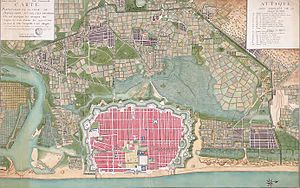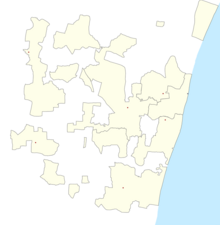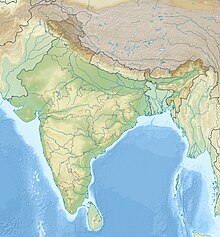This article includes a list of general references, but it lacks sufficient corresponding inline citations. (August 2012) |
| Siege of Pondicherry | |||||||
|---|---|---|---|---|---|---|---|
| Part of the American Revolutionary War[1] | |||||||
 French map depicting the siege, c. 1778 | |||||||
| |||||||
| Belligerents | |||||||
|
Great Britain British East India Company | France | ||||||
| Commanders and leaders | |||||||
|
Hector Munro Edward Vernon |
Guillaume de Bellecombe (POW) François-Jean-Baptiste l'Ollivier de Tronjoli | ||||||
| Strength | |||||||
|
1,500 British army regulars 9,000 or more company troops and sepoys |
700 French regulars 400–600 sepoys | ||||||
| Casualties and losses | |||||||
|
77 British army killed 11 British navy killed 155 sepoys killed 193 British army wounded 53 British navy wounded 684 sepoys wounded |
92 French killed 52 sepoys killed 191 French wounded 94 sepoys wounded | ||||||
Location within Puducherry | |||||||
The siege of Pondicherry was the first military action on the Indian subcontinent following the declaration of war between Great Britain and France in the American Revolutionary War. A British force besieged the French-controlled port of Pondicherry (now Puducherry) in August 1778, which capitulated after ten weeks of siege.
- ^ Tucker (2018), p. 771

